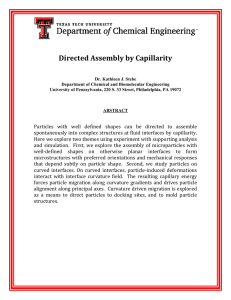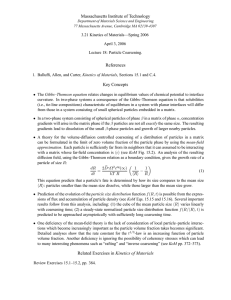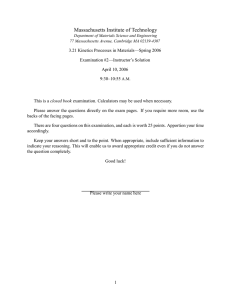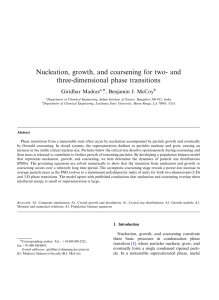Document 13554864
advertisement
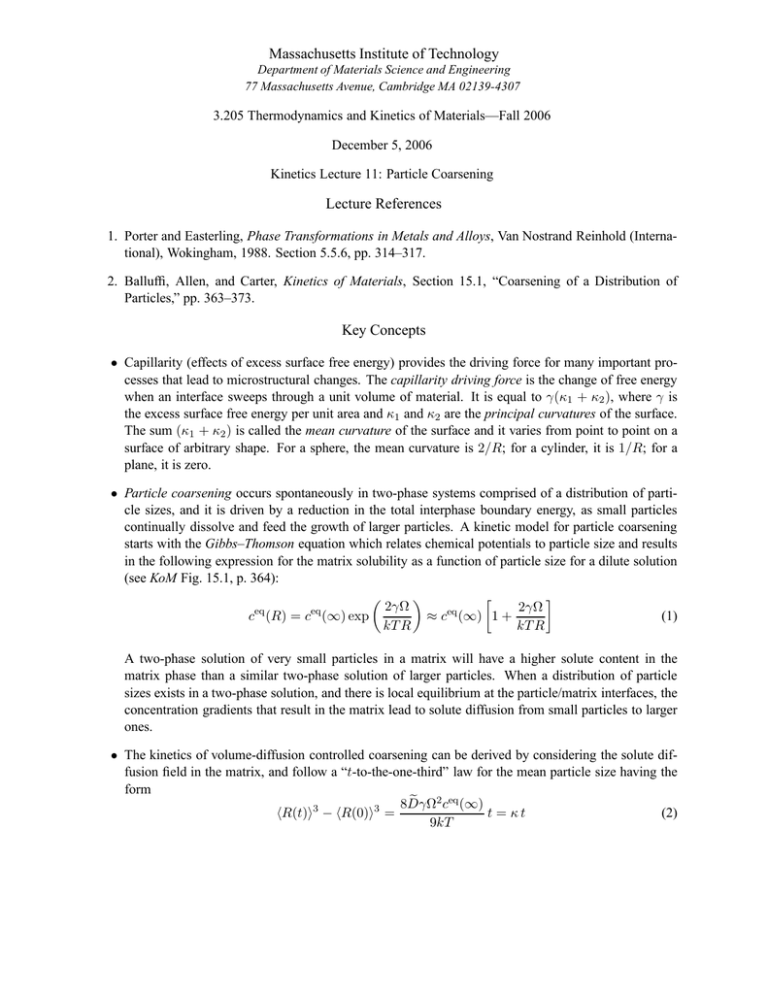
Massachusetts Institute of Technology Department of Materials Science and Engineering 77 Massachusetts Avenue, Cambridge MA 02139-4307 3.205 Thermodynamics and Kinetics of Materials—Fall 2006 December 5, 2006 Kinetics Lecture 11: Particle Coarsening Lecture References 1. Porter and Easterling, Phase Transformations in Metals and Alloys, Van Nostrand Reinhold (Interna­ tional), Wokingham, 1988. Section 5.5.6, pp. 314–317. 2. Balluffi, Allen, and Carter, Kinetics of Materials, Section 15.1, “Coarsening of a Distribution of Particles,” pp. 363–373. Key Concepts • Capillarity (effects of excess surface free energy) provides the driving force for many important pro­ cesses that lead to microstructural changes. The capillarity driving force is the change of free energy when an interface sweeps through a unit volume of material. It is equal to γ(κ1 + κ2 ), where γ is the excess surface free energy per unit area and κ1 and κ2 are the principal curvatures of the surface. The sum (κ1 + κ2 ) is called the mean curvature of the surface and it varies from point to point on a surface of arbitrary shape. For a sphere, the mean curvature is 2/R; for a cylinder, it is 1/R; for a plane, it is zero. • Particle coarsening occurs spontaneously in two-phase systems comprised of a distribution of parti­ cle sizes, and it is driven by a reduction in the total interphase boundary energy, as small particles continually dissolve and feed the growth of larger particles. A kinetic model for particle coarsening starts with the Gibbs–Thomson equation which relates chemical potentials to particle size and results in the following expression for the matrix solubility as a function of particle size for a dilute solution (see KoM Fig. 15.1, p. 364): � � � � 2γΩ 2γΩ eq eq eq c (R) = c (∞) exp ≈ c (∞) 1 + (1) kT R kT R A two-phase solution of very small particles in a matrix will have a higher solute content in the matrix phase than a similar two-phase solution of larger particles. When a distribution of particle sizes exists in a two-phase solution, and there is local equilibrium at the particle/matrix interfaces, the concentration gradients that result in the matrix lead to solute diffusion from small particles to larger ones. • The kinetics of volume-diffusion controlled coarsening can be derived by considering the solute dif­ fusion field in the matrix, and follow a “t-to-the-one-third” law for the mean particle size having the form � 2 ceq (∞) 8DγΩ t = κ t (2) �R(t)�3 − �R(0)�3 = 9kT
